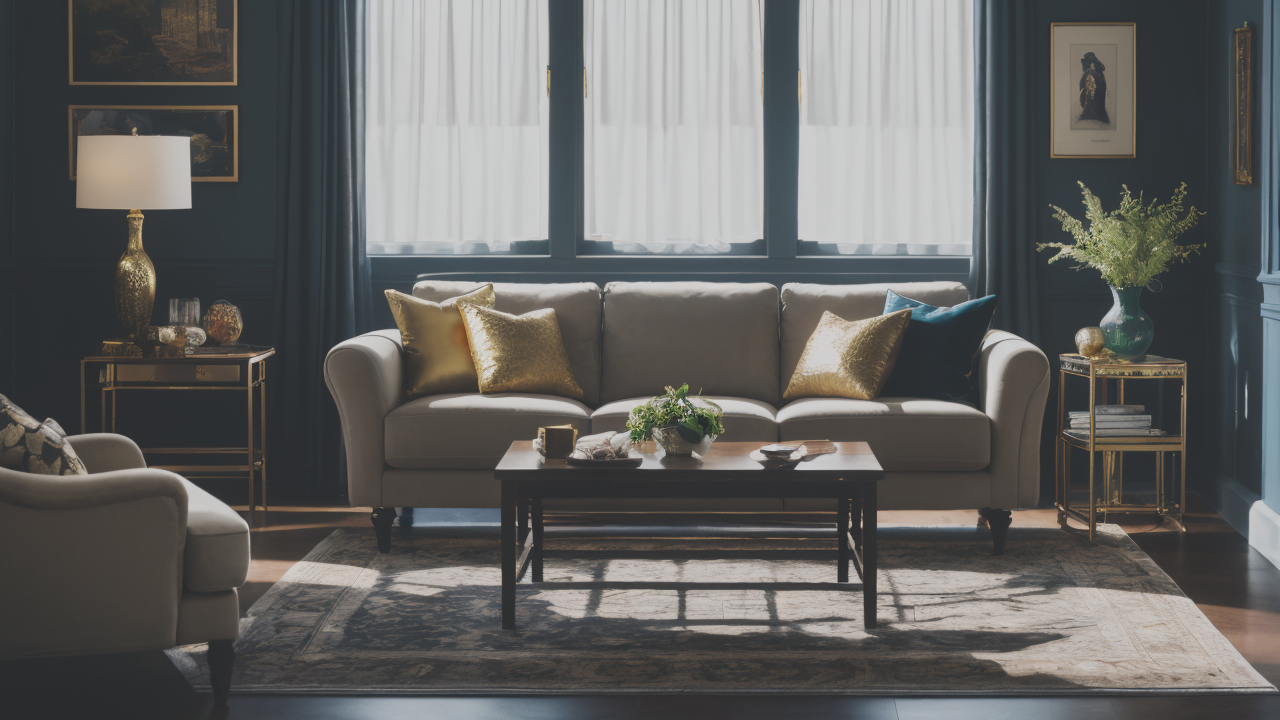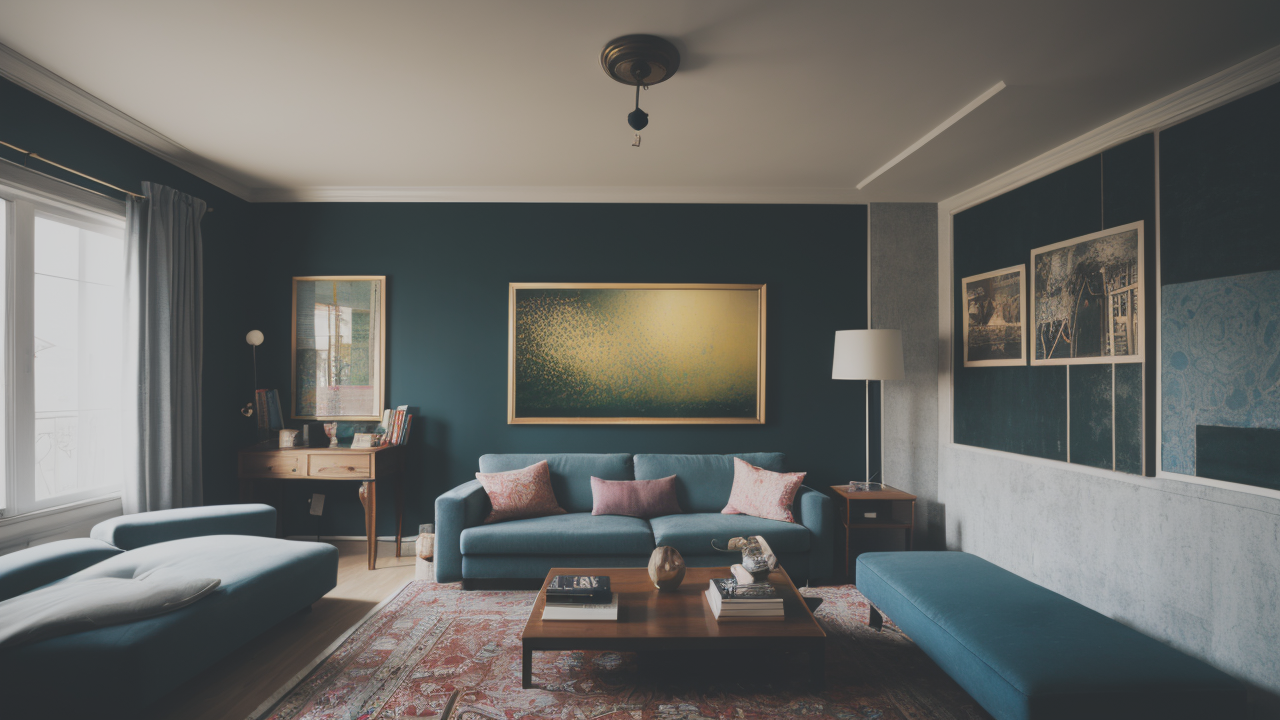
The Rise of Nawabi-Inspired Colorful Paintings in American Interiors
Understanding the Appeal of Nawabi-Style Art
Exploring the History and Influence of Nawabi Art
Nawabi art has its roots in the rich cultural heritage of India. It emerged during the time of the Nawabs, who were influential rulers in various parts of the country. This art style reflects their opulent lifestyle and refined tastes.

Nawabi art is known for its vibrant colors and intricate details. It often depicts scenes from royal courts, grand celebrations, and everyday life. The style has influenced many forms of art, including painting, architecture, and textiles.
Over time, Nawabi art has evolved to blend traditional elements with modern aesthetics. This makes it a popular choice for contemporary home decor. Many people are drawn to its ability to add a touch of exotic beauty to their spaces.
Today, Nawabi-inspired art continues to captivate art lovers around the world. It offers a glimpse into a bygone era of luxury and refinement. Its enduring appeal lies in its ability to transport viewers to a different time and place.
The Psychological Impact of Vibrant Wall Art
Colorful wall art, like Nawabi-style pieces, can have a powerful effect on our mood and well-being. Bright colors can stimulate the senses and evoke positive emotions. They can energize a space and create a lively atmosphere.
Research shows that exposure to vibrant art can reduce stress and anxiety. It can also boost creativity and productivity. The intricate details in Nawabi art can encourage mindfulness. Viewers often spend time exploring the artwork, which can be a calming experience.
Colorful wall art can serve as a focal point in a room. It draws the eye and creates visual interest. This can make a space feel more inviting and personalized. By choosing Nawabi-inspired pieces, you're not just decorating. You're creating an immersive experience that can positively impact your daily life.
Best Practices for Selecting and Displaying Nawabi-Inspired Pieces
Identifying Authentic Nawabi Artwork
When choosing Nawabi-inspired art, look for pieces that capture the essence of this style. Authentic Nawabi art features rich, jewel-toned colors. Think deep reds, blues, and golds. It often includes intricate patterns and detailed scenes.

Pay attention to the subject matter. Traditional Nawabi art often depicts:
- Royal court scenes
- Grand festivities
- Hunting expeditions
- Portraits of nobles
- Cultural events and ceremonies
Consider the materials used. High-quality Nawabi-inspired art is often created on:
- Silk
- Canvas
- Handmade paper
Some pieces may incorporate gold leaf or other luxurious elements. This adds to their authenticity and value.
Research the artist or manufacturer. Reputable sources will provide information about the artwork's origin. They should be able to tell you about the creation process. Don't hesitate to ask questions about the piece's authenticity and history.
Strategies for Effective Wall Art Placement
Proper placement is key to showcasing your Nawabi-inspired art. Start by considering the size of your artwork. Think about how it relates to the wall space. A large piece can serve as a stunning focal point. Smaller works can be grouped together for impact.
Think about the room's purpose and traffic flow. In living areas, place art at eye level for easy viewing. In dining rooms, consider hanging pieces slightly lower. This allows them to be appreciated while seated.
Balance is crucial. If you have a large, colorful Nawabi piece, surround it with simpler decor. This prevents the space from feeling overwhelming. For smaller pieces, try arranging them in a gallery wall format. This can create a cohesive and visually interesting display.
Consider the lighting in your room. Natural light can enhance the vibrant colors of Nawabi art. For darker spaces, think about adding accent lighting. This can highlight your artwork and bring out its best features.
Maximizing the Visual Impact of Your Nawabi Art Collection
Curating Your Walls: Balance and Diversity
Creating a visually appealing Nawabi art collection requires careful curation. Start by selecting a variety of pieces that complement each other. Mix different sizes, styles, and subjects. This adds interest and depth to your display.

Consider creating a color story. Choose artworks with complementary or harmonious color schemes. This can create a cohesive look even with diverse pieces. Don't be afraid to mix traditional Nawabi art with modern interpretations.
Think about the overall composition of your wall. Create visual balance by alternating between:
- Busy, detailed pieces
- Simpler, more minimalist works
This prevents the display from becoming overwhelming. It gives the eye places to rest between more complex pieces.
Experiment with different arrangements before committing. Use paper templates to plan your layout. This helps you visualize the final result. You can make adjustments as needed before hanging the actual artwork.
Lighting and Decor: Enhancing the Nawabi Art Experience
Proper lighting can dramatically enhance the impact of your Nawabi art collection. Consider installing:
- Picture lights
- Track lighting
- Adjustable spotlights
These can highlight specific pieces. They bring out the vibrant colors and intricate details of the artwork.
Natural light can also play a role. Position art near windows to take advantage of daylight. Be mindful of direct sunlight, which can fade colors over time. Use UV-protective glass or acrylic to preserve your artwork.
Complement your Nawabi art with appropriate decor. Choose furniture and accessories that echo the colors or motifs in your artwork. This creates a cohesive look throughout the room. Consider adding:
- Richly patterned cushions
- Ornate rugs
- Metallic accents
These elements can enhance the overall aesthetic. They create a more immersive experience that honors the Nawabi tradition.
Remember, the goal is to create a space that reflects your personal style. It should also honor the rich tradition of Nawabi art. With thoughtful selection, placement, and curation, your Nawabi-inspired wall art can transform your home. It becomes a vibrant, culturally rich sanctuary that tells a unique story.


